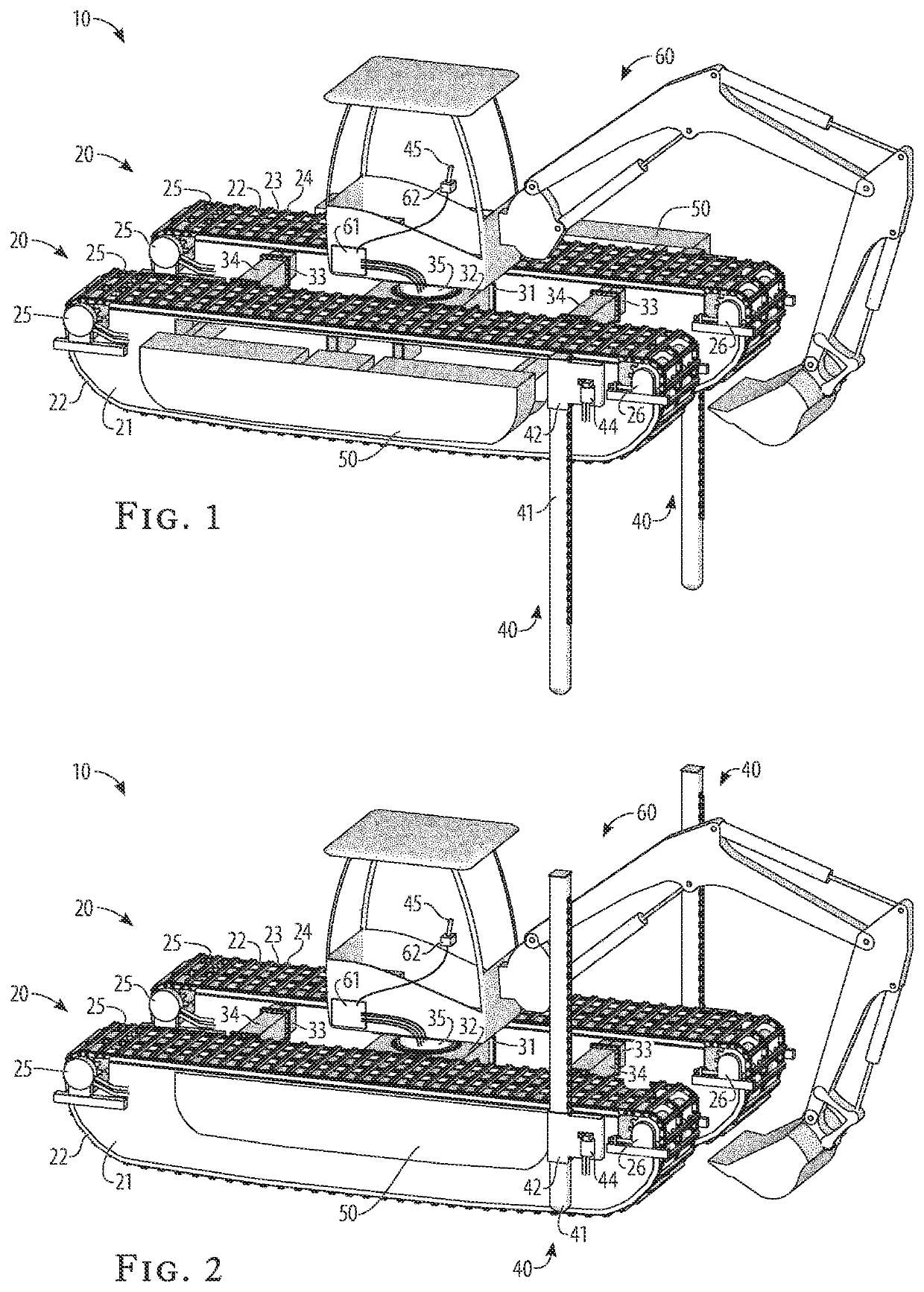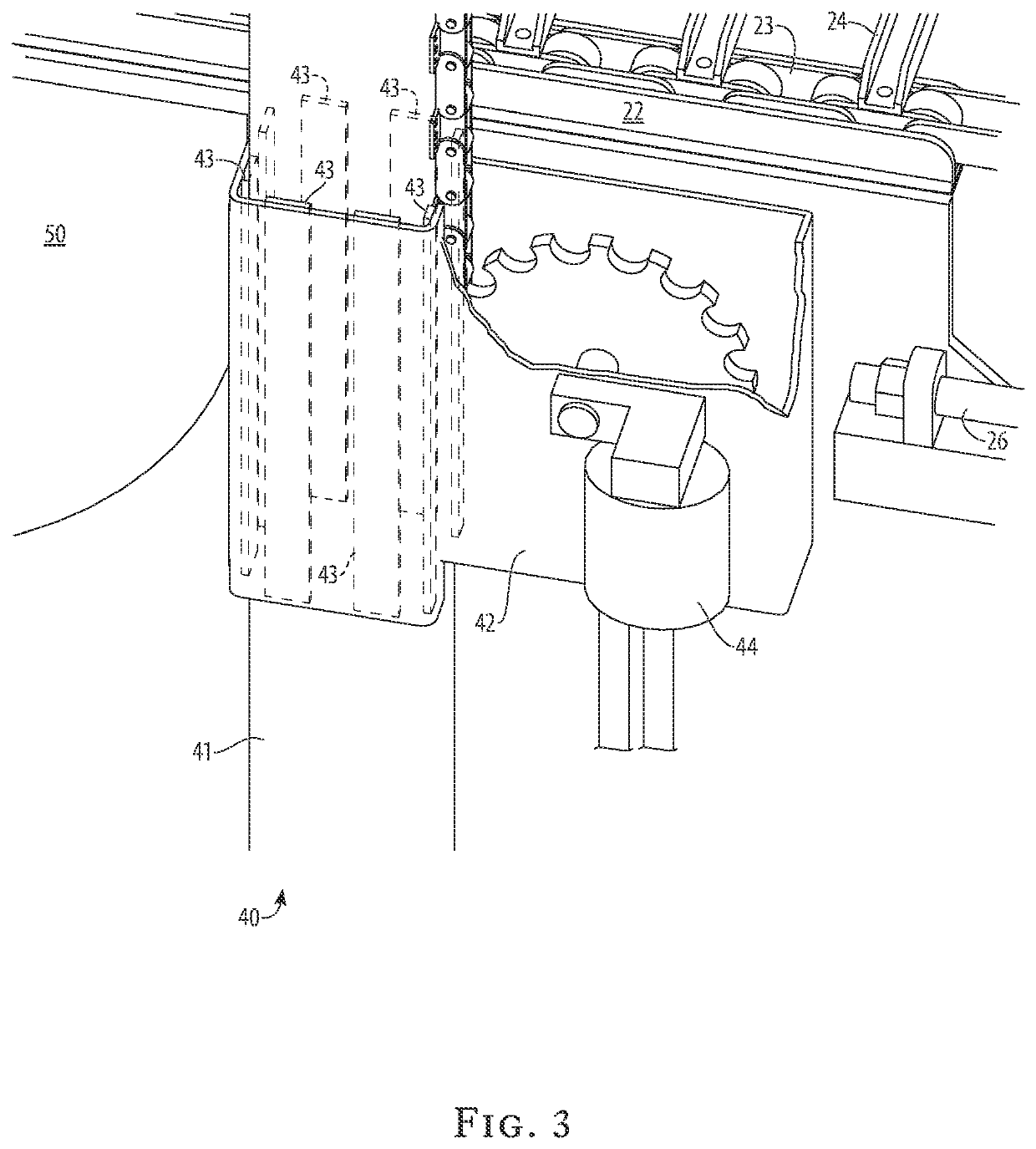Amphibious platform vehicle-vessel
a technology of amphibious platforms and vehicles, which is applied in the direction of mechanical machines/dredgers, soil shifting machines/dredgers, transportation and packaging, etc., can solve the problems of cumbersome process of deployment and retracting of spuds, marsh buggies are limited in earth-moving operations, and vehicles aren't designed to operate while floating, so as to increase the stability of floating operations
- Summary
- Abstract
- Description
- Claims
- Application Information
AI Technical Summary
Benefits of technology
Problems solved by technology
Method used
Image
Examples
Embodiment Construction
[0025]Referring to FIG. 1 and FIG. 2, the amphibious platform vehicle-vessel 10 provides for the use of moving-lifting equipment 60 on solid ground, semi-solid or marshy ground, shallow water, and deeper water. The moving-lifting equipment 60 can be of an excavator or backhoe type, as illustrated, or of a crane type. The different types and brands of moving-lifting equipment have different physical mounting configurations, and the amphibious platform vehicle-vessel 10 is adaptable to different equipment, as treated below. The amphibious platform vehicle-vessel 10 is modular and can be transported to or from a worksite as separate modules of size and weight appropriate to fit onto a truck trailer operating on existing roads and highways. The amphibious platform vehicle-vessel 10 provides for movement of mounted moving-lifting equipment 60 around a worksite, including movement between solid, marshy, and water surfaces.
[0026]The moving-lifting equipment 60 is hydraulically operated and...
PUM
 Login to View More
Login to View More Abstract
Description
Claims
Application Information
 Login to View More
Login to View More - R&D
- Intellectual Property
- Life Sciences
- Materials
- Tech Scout
- Unparalleled Data Quality
- Higher Quality Content
- 60% Fewer Hallucinations
Browse by: Latest US Patents, China's latest patents, Technical Efficacy Thesaurus, Application Domain, Technology Topic, Popular Technical Reports.
© 2025 PatSnap. All rights reserved.Legal|Privacy policy|Modern Slavery Act Transparency Statement|Sitemap|About US| Contact US: help@patsnap.com



